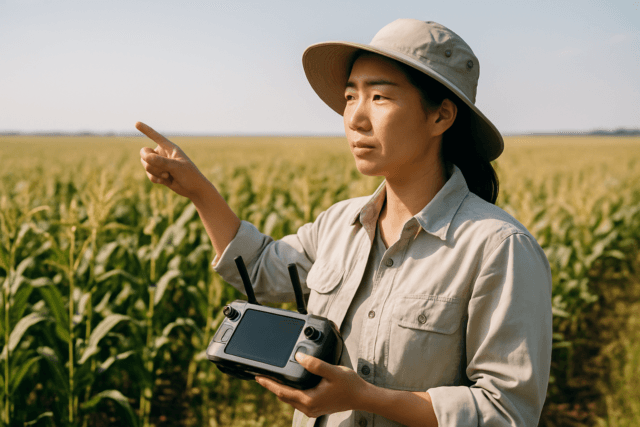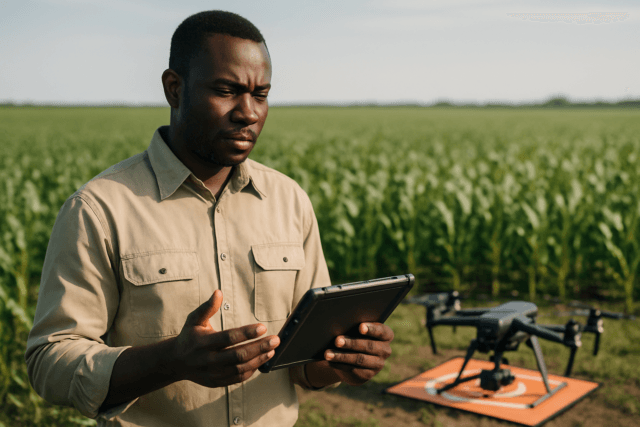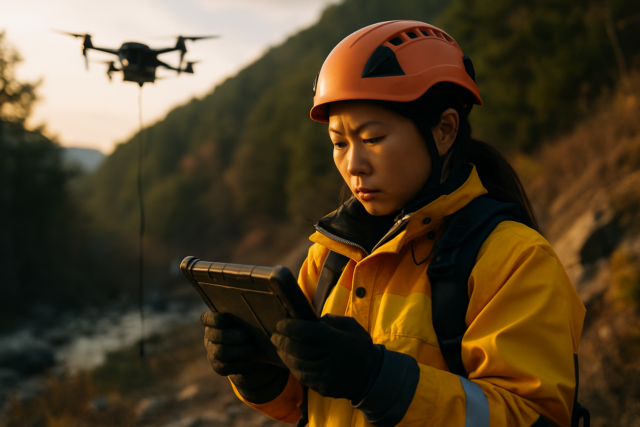The night sky, once the exclusive canvas for fireworks, is increasingly being transformed into a dazzling stage for autonomous drone swarms. These synchronized aerial ballets, painting intricate patterns and animations with hundreds or thousands of illuminated drones, represent a breathtaking fusion of art and cutting-edge technology. At the heart of this mesmerizing spectacle lies artificial intelligence (AI), the invisible choreographer enabling complex, precise, and safe swarm behaviors. This article delves into how AI is sourced and integrated to bring these aerial wonders to life.
The Rise of Autonomous Drone Swarm Performances
Drone swarm performances, often called drone light shows, involve numerous unmanned aerial vehicles (UAVs) flying in coordinated formations to create dynamic visual displays. These performances offer significant advantages over traditional pyrotechnics, including greater precision, reusability, reduced environmental impact, and the ability to convey complex narratives and brand messages. Countries like China have emerged as leaders in orchestrating thousands of drones for impressive light shows. Companies like FlyPix AI, BotLab Dynamics, and Shenzhen DAMODA Intelligent Control Technology specialize in creating these intricate aerial displays.
Why AI is Indispensable for Drone Swarms
Achieving the seamless, synchronized movements of a drone swarm, especially with hundreds or thousands of units, is beyond manual control. This is where AI becomes crucial. AI algorithms enable drones to operate autonomously, make real-time decisions, coordinate actions, and dynamically respond to changing environments. Without AI, the complexity of managing individual drone trajectories, maintaining safe distances, and executing fluid formations would be insurmountable.
Key aspects where AI proves indispensable include:
- Real-time Decision-Making: AI allows drones to continuously collect and analyze sensor data, making instantaneous adjustments to their flight paths and formations based on predefined objectives or rules.
- Coordination and Synchronization: AI algorithms, such as consensus algorithms and formation control, enable drones to make collective decisions and organize into specific structures, ensuring all drones start and execute actions simultaneously to create coherent patterns.
- Adaptability and Resilience: Swarms can dynamically adapt to environmental disturbances like wind gusts or individual drone failures, redistributing tasks among remaining units to maintain operational integrity. This redundancy is a cornerstone of swarm technology.
- Complex Choreography: AI allows for the creation and execution of intricate 2D and 3D animations in the sky, transforming abstract concepts into tangible aerial art.
Sourcing AI for Drone Swarm Systems
The AI powering entertainment drone swarms can originate from several sources, depending on the complexity, budget, and desired level of customization.
Custom-Developed AI Algorithms
Many leading drone show companies and research institutions develop proprietary AI algorithms. These are often inspired by collective behaviors in nature, such as bird flocks or fish schools, using principles of swarm robotics. Researchers are actively exploring advanced AI methodologies like reinforcement learning, multi-agent systems, and deep neural networks to empower UAV swarms to navigate dynamic environments and optimize resource use. This custom development allows for highly specialized and unique performance capabilities, but it requires significant investment in R&D and a team of AI and robotics experts. Some examples include:
- Flocking and Self-Organization: Algorithms that allow drones to sense neighbors’ positions and velocities, adjust their own behavior, and maintain a cohesive swarm structure.
- Path Planning and Obstacle Avoidance: Advanced algorithms that plan optimal trajectories and adjust movements based on detected obstacles, preventing collisions even in cluttered environments.
- Choreography Generation: Recent innovations even involve using large language models (LLMs) like ChatGPT to generate choreographies for drone swarms based on music, with an underlying safety filter to prevent collisions.
Off-the-Shelf AI Platforms and SDKs
For entities without the resources for full custom development, there are increasingly sophisticated off-the-shelf AI platforms and Software Development Kits (SDKs) available. These solutions provide a foundational layer of AI capabilities, which can then be customized for specific performance needs. These platforms often include modules for:
- Autonomous Navigation: Enabling drones to chart their own course with minimal human intervention, utilizing waypoints and dynamic obstacle avoidance.
- Computer Vision: Allowing drones to perceive and understand visual information, recognizing objects, and interpreting their surroundings.
- Swarm Intelligence Modules: Pre-built functions for inter-drone communication, collective decision-making, and synchronized movements.
Some companies, like Gather AI, focus on software-first solutions that can power drones with AI, offering plug-and-play deployment compatible with various hardware.
Academic and Open-Source Research
The field of swarm robotics and AI is vibrant with academic research. Many fundamental algorithms and frameworks are developed in university labs and often released as open-source projects. These can be adopted, adapted, and integrated by performance companies, providing a cost-effective way to access advanced AI capabilities while fostering collaborative innovation.
Integrating AI for Seamless Performance
Integrating AI into an autonomous drone swarm performance system involves a multifaceted approach, encompassing hardware, software, and communication infrastructure.
Hardware Integration
- Onboard Processors (Edge AI): Drones require powerful onboard processing units to execute AI algorithms in real-time. Edge computing allows drones to analyze data locally, reducing latency and reliance on constant cloud connectivity, which is crucial for instantaneous decision-making like obstacle avoidance.
- Advanced Sensors: AI-powered drones integrate various sensors—cameras, LiDAR (Light Detection and Ranging), radar, and infrared detectors—to gather comprehensive data about their environment. AI algorithms then fuse and interpret this data to build a robust understanding of the surroundings.
- Communication Modules: Reliable and secure communication links are vital for inter-drone coordination and communication with a ground control station (GCS). This involves specialized radio modules and often utilizes 5G connectivity for faster data speeds and lower latency, enhancing data processing and precision.
Software Integration
- Flight Control Systems: AI algorithms are integrated directly into the drones’ flight control systems. This allows the AI to translate high-level choreographic commands into precise motor controls, adjusting individual drone movements to maintain formations and avoid collisions.
- Choreography and Simulation Software: Performance designers use specialized software to create the desired aerial patterns and animations. This software often incorporates AI-driven algorithms to simulate the swarm’s behavior, identify potential issues, and optimize trajectories before deployment. For instance, Drotek provides an all-in-one platform with secure local web applications to manage thousands of drones for light shows.
- Multi-Agent Systems: AI in drone swarms often leverages multi-agent reinforcement learning (MARL) where each drone learns to select optimal behaviors based on limited inputs from neighbors and its own sensors. This decentralized control helps in managing complex tasks and enhances adaptability.
- Safety Protocols and Filters: Critical safety filters, often based on distributed optimization frameworks, are continuously running to prevent collisions, even if the primary choreography algorithms generate conflicting commands. This ensures drones never collide during a performance.
Data Processing and Analytics
AI drones generate vast amounts of data. This data is processed both onboard (edge computing for real-time needs) and, for more complex analysis, transferred to cloud servers. This enables:
- Real-time Feedback: Monitoring drone performance, identifying skill gaps, and providing instant feedback, particularly useful in development and testing phases.
- Predictive Maintenance: AI models can analyze flight data to predict maintenance needs, optimize operations, and enhance asset management, ensuring operational readiness and minimizing downtime.
Benefits of AI in Entertainment Drone Swarms
The integration of AI into drone swarm performances yields several significant benefits:
- Unprecedented Artistic Expression: AI allows for the creation of intricate, dynamic, and seamless visual narratives in the sky that would be impossible with traditional methods.
- Enhanced Precision and Synchronization: AI ensures hundreds or thousands of drones move with exact timing and spatial accuracy, creating breathtaking visual effects.
- Increased Safety: AI-driven collision avoidance, real-time path planning, and adaptive navigation significantly reduce the risk of accidents, protecting both the audience and the valuable drone assets.
- Scalability: AI coordination frameworks enable swarms to scale seamlessly from tens to hundreds or even thousands of drones, allowing a single operator to manage vast numbers with consistent performance.
- Efficiency and Cost-Effectiveness: Autonomous operations reduce the need for constant human intervention, streamlining logistics and potentially lowering operational costs in the long run.
Challenges and Future Outlook
Despite the impressive advancements, challenges remain in the widespread adoption and continuous improvement of AI for drone swarm performances. These include regulatory compliance, ensuring robust safety and collision avoidance in unpredictable environments, managing battery life, processing massive datasets, and addressing ethical and privacy concerns.
The future of AI in entertainment drones is bright, with continuous advancements expected in:
- More Sophisticated Choreography: AI will enable even more complex and interactive performances, possibly responding to audience input or environmental cues.
- Human-Drone Symbiosis: Further integration of AI could lead to more intuitive control interfaces and seamless collaboration between human operators and autonomous swarms.
- Advanced Sensor Fusion and Multimodal Perception: Drones will become even better at understanding their environment by combining data from diverse sensor types.
- Improved Resilience: Swarms will gain enhanced self-healing capabilities, autonomously adapting to environmental disruptions or cyberattacks while maintaining mission objectives.
As AI continues to evolve, autonomous drone swarms will undoubtedly continue to redefine the boundaries of aerial entertainment, offering ever more spectacular and immersive experiences.





